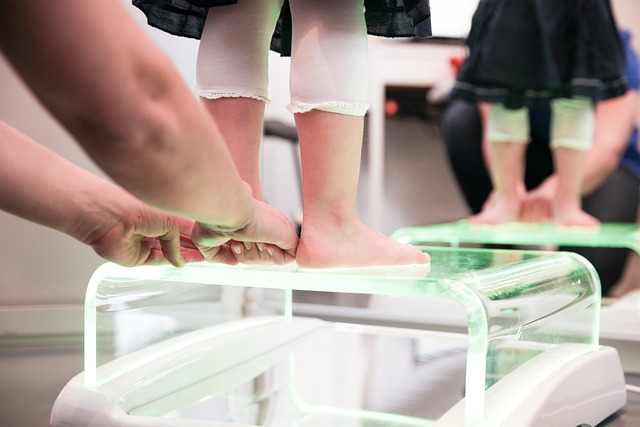Cold therapy, including ice packs, cold water immersion, and cryotherapy, offers significant advantages in post-migraine recovery and prevention. By constricting blood vessels and reducing inflammation, these cooling techniques provide immediate migraine relief. Long-term benefits disrupt neural pathways responsible for pain signals, potentially preventing future migraines. Incorporating these accessible and non-invasive methods into a comprehensive migraine management plan can be transformative for chronic or severe sufferers.
“Unraveling the power of cold therapy offers a promising path to managing and preventing post-migraine symptoms. This therapeutic approach, often overlooked, can provide significant relief for sufferers. From traditional ice packs to advanced techniques like cryotherapy and cold water immersion, this article explores diverse methods to combat migraine pain. Discover how these cooling techniques not only alleviate acute migraine attacks but also contribute to long-term prevention, offering a refreshing perspective on headache management.”
Understanding Cold Therapy for Migraines
Cold therapy has emerged as a powerful tool in the arsenal against post-migraine recovery and prevention. By applying cold compresses, ice packs, or even engaging in activities like cold water immersion, individuals can experience significant relief from migraine pain. The benefits of this technique are multifaceted. Cold temperatures help constrict blood vessels, reducing both inflammation and blood flow to the brain, which is believed to be a primary cause of migraines. This sudden vasoconstriction acts as a natural pain reliever, providing immediate migraine relief.
Additionally, cryotherapy, which involves short, intense bursts of cold exposure, has been shown to offer long-term benefits. It can disrupt the neural pathways responsible for transmitting pain signals, preventing future migraines from occurring. Cooling techniques, when incorporated into a comprehensive migraine management strategy, can be life-changing for those who suffer from chronic or severe migraines. An ice pack for migraine relief, for instance, is an easy and accessible solution that people can use at home, while cold water immersion offers a more immersive experience with potential therapeutic benefits.
Ice Packs and Their Role in Migraine Relief
Ice packs have long been a go-to remedy for migraine sufferers, offering targeted and effective relief. The application of cold directly to the affected area helps constrict blood vessels, reducing both inflammation and pain associated with migraines. This simple yet powerful technique is a core component of cold therapy for migraines, which has gained significant recognition in recent years as a natural and non-invasive approach to managing this debilitating condition.
The benefits of using ice packs for migraine relief are numerous. Cold compresses can provide immediate soothing effects, helping to calm the intense throbbing and pulsating sensations often experienced during a migraine attack. Moreover, regular use of ice packs as a preventive measure can help reduce the frequency and severity of migraines over time. Techniques such as cold water immersion or applying ice packs strategically during specific headache phases have been shown to offer lasting benefits, making it an accessible and effective solution for folks looking to manage their migraines holistically.
Exploring Advanced Techniques: Cryotherapy and Cold Water Immersion
In recent years, advanced techniques like cryotherapy and cold water immersion have emerged as promising avenues for post-migraine recovery and prevention. Cryotherapy involves exposing the body to extreme cold temperatures, typically in a specialized chamber, for short periods. This rapid cooling helps reduce inflammation and constrict blood vessels, providing significant migraine pain relief. The benefits of cold compresses are well-documented, offering a simple yet effective home remedy for headache sufferers.
Cold water immersion, on the other hand, involves submerging parts or the entire body in ice-cold water. This method accelerates the body’s natural healing processes by stimulating blood flow to affected areas and releasing endorphins, the body’s natural painkillers. Combining these cooling techniques with traditional treatments can significantly enhance migraine management, offering both short-term relief and long-lasting prevention strategies for folks dealing with recurring migraines.
Benefits and Implementation of Cooling Techniques for Headaches
Cold therapy has emerged as a powerful tool in the arsenal against post-migraine recovery and prevention. The implementation of cooling techniques offers significant benefits for individuals suffering from migraines. Ice packs, a simple yet effective remedy, can provide immediate migraine relief by reducing inflammation and constricting blood vessels, thereby minimizing pain.
Beyond ice packs, more extreme methods like cryotherapy (cold chamber immersions) and cold water baths have gained attention. These practices involve exposing the body to extreme cold for short periods, which has been shown to reduce muscle spasms, decrease inflammation, and boost the body’s natural healing processes. By incorporating cooling techniques into their routines, migraine sufferers can not only ease acute pain but also potentially prevent future episodes, offering a natural and non-invasive approach to management.
Cold therapy has emerged as a powerful tool in the arsenal against post-migraine recovery and prevention. From traditional ice packs to advanced techniques like cryotherapy and cold water immersion, these cooling methods offer significant benefits in reducing migraine pain, inflammation, and frequency. By implementing these simple yet effective strategies, individuals can take control of their migraine management, experiencing faster relief and improved overall well-being. Incorporating cold therapy into a comprehensive migraine prevention plan can be a game-changer for those suffering from this debilitating condition.
